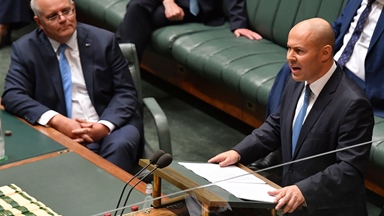At a glance
Treasurer Josh Frydenberg’s fourth Federal Budget is a pre-election special stacked with A$8.6 billion in tax rebates and one-off payments, which also delivers relief to Australian motorists at the petrol pump through a cut to the fuel excise.
With the upcoming federal election – likely due by 21 May – clearly at the top of the agenda, the government also addresses national security with a A$10 billion cyber security package, giving it ammunition to fight a so-called “khaki election”.
The dominant themes in the budget are hip-pocket relief for voters, small business incentives and beefed-up defence spending in an era of geopolitical uncertainty. These will play firmly into election themes of economic management and being proactive about national security.
Combined with funding for infrastructure, skills training, the regions and aged care, the budget seeks to cushion cost of living increases – in the short term – while also addressing key vectors of potential criticism by the Labor opposition.
Frydenberg’s message is that the extra budget spending has been enabled by a stronger economy that is rebounding from the pandemic restrictions and ready to enter a new phase of growth.
The treasurer said the budget would also deliver “the largest and fastest improvement to the budget bottom line in over 70 years.”
“By the end of the forward estimates, the budget is A$100 billion better off compared to last year,” Frydenberg said.
The deficit for 2022-2023 is expected to be A$78 billion or 3.4 per cent of GDP. This compares to a deficit of A$161 billion last year.
Over the next three years, Frydenberg said that the deficit would more than halve to 1.6 per cent of GDP.
Net debt as a share of the economy is estimated to peak at 33.1 per cent at 30 June 2026, reaching A$714.9 billion before beginning to decline.
Perhaps contentiously, the budget is forecasting that the strong labour market, with unemployment heading below 4 per cent, will deliver wages growth at “its fastest pace in almost a decade” with the Wage Price Index forecast to increase from 2.75 per cent this year to 3.25 per cent in 2022-2023 and cushion the impact of higher inflation.
However, real wages growth is likely to remain low. Inflation is forecast to moderate from 4.25 per cent this financial year to 3 per cent next year and 2.75 per cent in 2023-2024, projections slightly lower than those for wage increases.
Real GDP is expected to grow by 4.25 per cent in 2021-2022, 3.5 per cent in 2022-2023 and 2.5 per cent in 2023-2024.
Media release
Dr Jane Rennie, General Manager of External Affairs at CPA Australia, says that while there were elements of the budget that can be categorised as expansionary, “and more generous than we expected”, many of the announcements are “focused and temporary”.
“The government is seeking the sweet spot between supporting economic transformation and not stimulating inflation. It will be interesting to see how the Reserve Bank responds to this budget next Tuesday, when it meets to consider interest rates,” says Dr Rennie.
“Given the circumstances, we’re not overly concerned about Australia’s level of net debt. As high as the headline figures sound, they’re relatively low by international standards. It’s worth noting too, that this debt was racked up in the name of supporting millions of Australians and Australian businesses, which it did successfully. We should not be too critical of this debt or those who incurred it.”
With a budget such as this, the winners are spread across the economy, but a close look at the budget also reveals some losers who appear to have missed out.
Winners
Australian motorists and transportation businesses
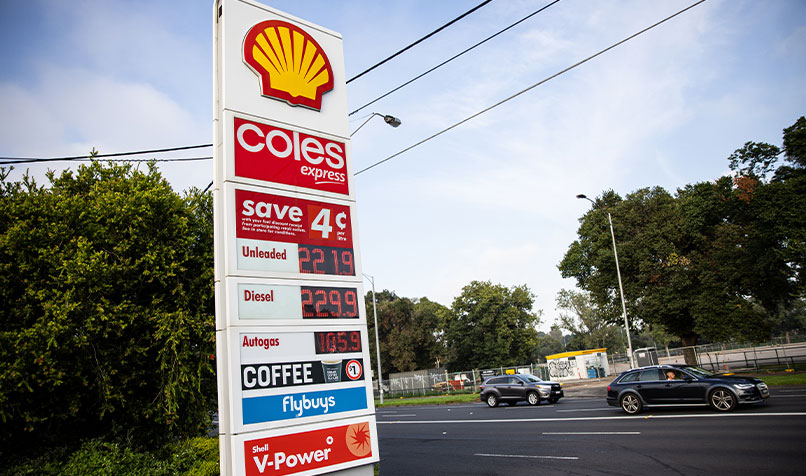
For the next six months, Australians will save 22 cents a litre every time they fill up their car after the halving in the fuel excise.
The treasurer claims that a family with two cars who fill up once a week could save about A$30 a week or roughly A$700 over the next six months.
This cut in fuel excise takes effect from midnight on budget night, and the government says it will flow through to the bowser over the next two weeks, under the close eye of the competition regulator to make sure the savings are passed on.
The cuts will cost the government A$5.6 billion.
“Temporarily cutting fuel excise will provide relief at the bowser and will hopefully reduce cost of living pressures; however, it’s an expensive measure,” says Dr Rennie.
“We hope the impact of this cut is not wiped out by large increases in international oil markets.”
Low and middle-income earners
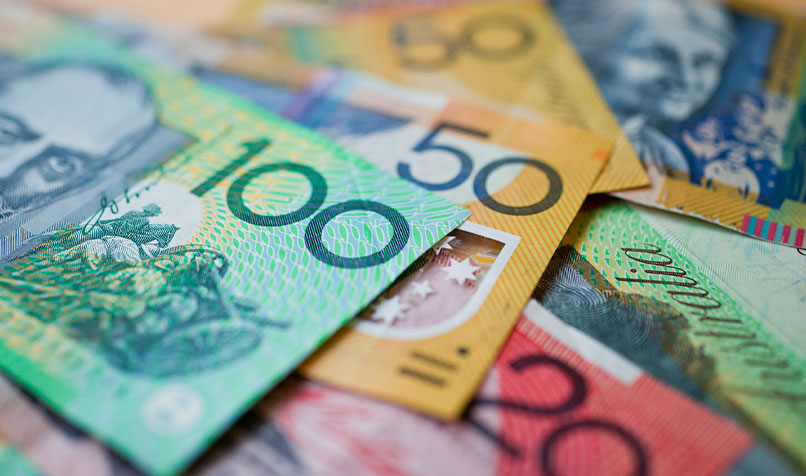
As predicted, the budget contains a one-off sweetener for many taxpayers, estimated at more than ten million low and middle-income earners.
Billed as a “cost of living offset”, taxpayers will receive A$420 through an increase to the lower and middle-income tax offset, which, depending on income levels, could mean a rebate of up to A$1500 when eligible taxpayers lodge their 2021-2022 tax return.
Pensioners, carers, veterans, job seekers, eligible self-funded retirees and concession card holders, an estimated six million Australians, will receive a A$250 cost of living Payment, to be delivered within six weeks.
Dr Rennie says that while one-off cash payments, aimed at easing cost of living pressures, are likely to be popular with many Australians, the combination of the increased lower and middle-income tax offset and direct cash payments “may contribute to inflationary pressures.”
Small business
The budget includes training incentives for small business, offering a A$120 tax deduction for every A$100 a small business spends on employee training.
There are also rebates for “small businesses that are embracing the digital revolution.”
Every hundred dollars small businesses spend on digital technologies like cloud computing, e-invoicing, cyber security and web design will also attract a A$120 tax deduction up until 30 June 2023.
This incentive is capped at expenditure up to A$100,000 per year for individual businesses.
Dr Rennie welcomes the initiatives, saying that CPA Australia research showed that Australian small businesses have some of the lowest levels of digital capability in the Asia-Pacific region.
“The technology investment boost and the skills and training boost are welcome,” she says.
“What’s missing from this budget are measures to make it easier for small businesses to access professional advice.
“CPA Australia research shows that high-growth businesses are much more likely to seek advice. The government has missed an important opportunity to help businesses build resilience to manage future shocks and improve their profitability.”
First and single parent home buyers
In an attempt to address housing affordability and promote the number of first home buyers, the budget doubles the number of available places in the Home Guarantee Scheme to 50,000 each year.
Over the past year, 160,000 people purchased their first homes through the scheme, which enables single parents to buy a home with a deposit as low as 2 per cent, with a 5 per cent deposit for first home buyers.
The budget also increases support for affordable housing by A$2 billion through the National Housing Finance and Investment Corporation.
Apprentices and trainees

The government has extended its support in boosting the apprenticeships scheme, providing A$5000 payments to new apprentices over two years and extending subsidies of up to A$15,000 for employers who take them on.
Frydenberg said the government would also support an additional 800,000 training places with a A$3.7 billion investment.
Dr Rennie acknowledges that while Australia needs more tradies, “the government’s narrow focus on a 'high viz, hard-hat' solution to plugging workforce shortages is disappointing.”
She adds: “The professions, including accounting, are suffering significant skills shortages. Underinvesting in employment opportunities for professionals and pathways for graduates is short-sighted.”
Regional Australia
The budget includes a new $A7.4 billion investment in more dams and water projects to improve water security and expand irrigation, and a new $A2 billion regional accelerator program to invest in skills, education infrastructure, export market development and supply chain resilience in the regions.
The budget also addressed mobile phone and internet coverage in regional Australia through a A$1.3 billion telecommunications package to expand mobile coverage across 8000km of regional transport routes.
Infrastructure fans
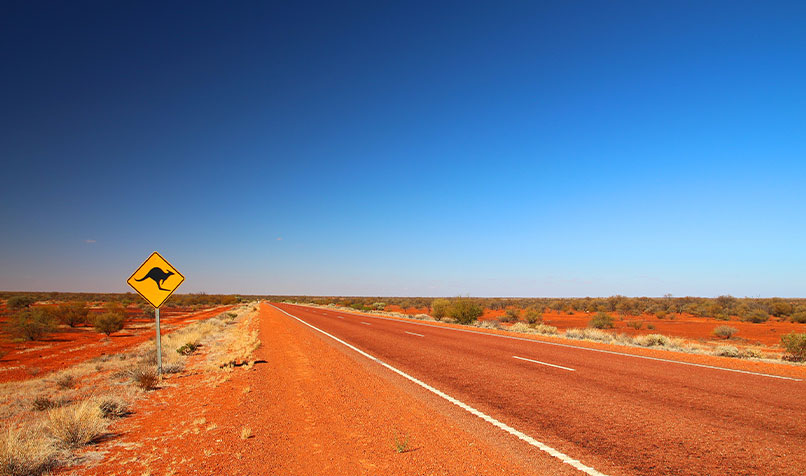
The budget also makes commitments to several strategic infrastructure projects around the country.
There are budget commitments for faster rail projects from Brisbane to the Sunshine Coast, from Sydney to Newcastle, Perth’s METRONET project, the North-South Corridor in South Australia, Great Eastern Drive in Tasmania, and Central Australian Tourism Roads in the Northern Territory.
There is also an investment in the Melbourne Intermodal Terminals to increase the efficiency of the national freight network, and more than A$500 million for local councils to deliver priority projects and A$880 million to better connect regional Australia with ports, airports and other transport hubs.
Cyber security
The budget addresses the emerging area of cyber security, announcing a 10-year, A$9.9 billion investment in Australia’s offensive and defensive cyber capabilities.
The government estimates this will create 1900 jobs for data analysts, computer programmers, and software engineers as Australia also boosts its capacity to prevent and respond to cyber threats.
Losers
Renewable energy
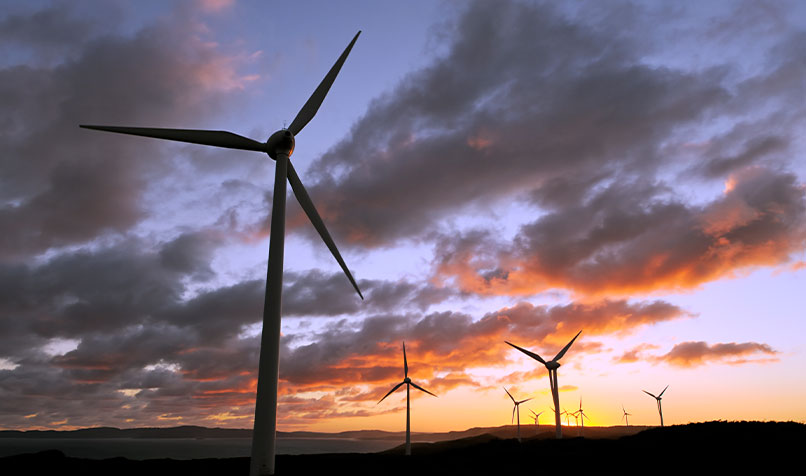
The treasurer’s speech highlights the government’s commitment to “playing its part in responding to the critical global challenge of climate change” but with the caveat that “technology, not taxes, will get us there.”
As with many budgets, losers are not necessarily targeted – they are ignored – and that is the case with renewable energy funding in the budget, which includes no new direct funding for renewable energy.
There is just under A$250 million over five years for technologies such as hydrogen, and A$84 million for community microgrid projects in regional and rural Australia but given the size of other commitments, these are not significant.
Brewers and beer drinkers

In the last budget, the brewing and distilling industry was a surprise winner, with a A$255 million tax relief package, but calls by the Brewers Association for a cut in the excise on draught beer this year have been ignored.
